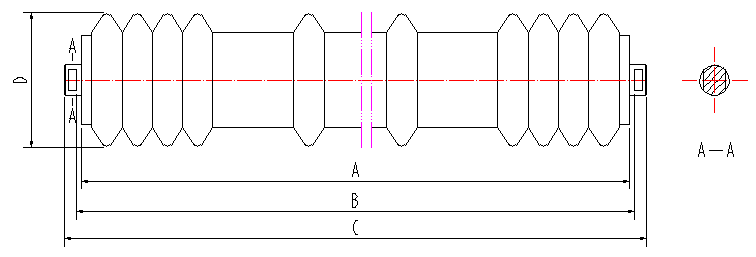 Afrikaans
Afrikaans  Albanian
Albanian  Amharic
Amharic  Arabic
Arabic  Armenian
Armenian  Azerbaijani
Azerbaijani  Basque
Basque  Belarusian
Belarusian  Bengali
Bengali  Bosnian
Bosnian  Bulgarian
Bulgarian  Catalan
Catalan  Cebuano
Cebuano  Corsican
Corsican  Croatian
Croatian  Czech
Czech  Danish
Danish  Dutch
Dutch  English
English  Esperanto
Esperanto  Estonian
Estonian  Finnish
Finnish  French
French  Frisian
Frisian  Galician
Galician  Georgian
Georgian  German
German  Greek
Greek  Gujarati
Gujarati  Haitian Creole
Haitian Creole  hausa
hausa  hawaiian
hawaiian  Hebrew
Hebrew  Hindi
Hindi  Miao
Miao  Hungarian
Hungarian  Icelandic
Icelandic  igbo
igbo  Indonesian
Indonesian  irish
irish  Italian
Italian  Japanese
Japanese  Javanese
Javanese  Kannada
Kannada  kazakh
kazakh  Khmer
Khmer  Rwandese
Rwandese  Korean
Korean  Kurdish
Kurdish  Kyrgyz
Kyrgyz  Lao
Lao  Latin
Latin  Latvian
Latvian  Lithuanian
Lithuanian  Luxembourgish
Luxembourgish  Macedonian
Macedonian  Malgashi
Malgashi  Malay
Malay  Malayalam
Malayalam  Maltese
Maltese  Maori
Maori  Marathi
Marathi  Mongolian
Mongolian  Myanmar
Myanmar  Nepali
Nepali  Norwegian
Norwegian  Norwegian
Norwegian  Occitan
Occitan  Pashto
Pashto  Persian
Persian  Polish
Polish  Portuguese
Portuguese  Punjabi
Punjabi  Romanian
Romanian  Russian
Russian  Samoan
Samoan  Scottish Gaelic
Scottish Gaelic  Serbian
Serbian  Sesotho
Sesotho  Shona
Shona  Sindhi
Sindhi  Sinhala
Sinhala  Slovak
Slovak  Slovenian
Slovenian  Somali
Somali  Spanish
Spanish  Sundanese
Sundanese  Swahili
Swahili  Swedish
Swedish  Tagalog
Tagalog  Tajik
Tajik  Tamil
Tamil  Tatar
Tatar  Telugu
Telugu  Thai
Thai  Turkish
Turkish  Turkmen
Turkmen  Ukrainian
Ukrainian  Urdu
Urdu  Uighur
Uighur  Uzbek
Uzbek  Vietnamese
Vietnamese  Welsh
Welsh  Bantu
Bantu  Yiddish
Yiddish  Yoruba
Yoruba  Zulu
Zulu Types and Uses of Conveyor Belt Scrapers in Material Handling Systems
Understanding Conveyor Belt Scraper Types
Conveyor belts are integral components in various industries, facilitating the movement of materials and products across different stages of production and logistics. However, maintaining the efficiency of these systems is crucial, and one of the key aspects of maintenance involves the use of conveyor belt scrapers. These devices, designed to clean the belt surface and prevent material build-up, come in various types suitable for different applications and materials. This article explores the different types of conveyor belt scrapers and their importance in ensuring operational efficiency.
The Importance of Conveyor Belt Scrapers
Conveyor belt scrapers play a vital role in maintaining the cleanliness and operational efficiency of conveyor systems. When materials accumulate on the belt, they can cause several issues such as reduced efficiency, increased wear on components, and safety hazards. Additionally, material build-up can lead to operational delays and increased maintenance costs. Therefore, using the correct type of scraper is essential for prolonging the life of the conveyor system and ensuring it operates smoothly.
Types of Conveyor Belt Scrapers
1. Primary Scrapers The primary scraper is typically the first line of defense in maintaining the cleanliness of the conveyor belt. These scrapers are usually mounted at the discharge point of the conveyor, where the bulk of material is transfered off the belt. Primary scrapers can be either fixed or tensioned, and they are designed to remove larger quantities of material. Effective primary scrapers can prevent the accumulation of material on the carry side of the belt, reducing spillage and improving overall efficiency.
conveyor belt scraper types

2. Secondary Scrapers As the name suggests, secondary scrapers are utilized after the primary scrapers. They are designed to target any residual material that remains on the belt surface after the primary cleaning has occurred. Secondary scrapers are typically more flexible and can adjust to the surface of the belt, effectively addressing stubborn material build-up. This type of scraper is crucial for applications where rigorous cleanliness standards are required, such as in the food processing or pharmaceutical industries.
3. Tensioned Scrapers Tensioned scrapers offer an adjustable cleaning mechanism, ensuring consistent pressure against the belt surface. These scrapers can be easily tensioned to maintain optimal contact with the belt, adapting to wear and tear over time. This feature makes them an effective solution in environments where material build-up is frequent or where the conveyor belt experiences significant fluctuations in tension.
4. Air Knife Systems Instead of traditional scrapers, air knife systems utilize high-velocity air streams to remove materials from the belt surface. These systems are particularly advantageous in applications involving fine or powdery materials that might otherwise adhere stubbornly to the belt. Air knives are often used in industries such as recycling, where moisture and fines may pose a significant challenge.
5. Specialized Scrapers Some applications may require scrapers made from specific materials due to the characteristics of the material being transported or the environment in which the conveyor operates. For example, food-grade scrapers made from FDA-approved materials are essential in the food industry to ensure compliance with health standards. Similarly, high-temperature scrapers are used in environments where heat may compromise the integrity of standard scraper materials.
Conclusion
The selection of the appropriate conveyor belt scraper is crucial for ensuring the efficiency and longevity of conveyor systems. By understanding the different types of scrapers available—primary, secondary, tensioned, air knife systems, and specialized scrapers—companies can make informed decisions that best suit their operational needs. Investing in the right scraper can lead to reduced maintenance costs, improved safety, and enhanced efficiency, ultimately contributing to a more productive operation. As industries continue to evolve and demand higher productivity levels, the role of conveyor belt scrapers will remain a fundamental aspect of material handling and processing solutions.
-
Revolutionizing Conveyor Reliability with Advanced Rubber Lagging PulleysNewsJul.22,2025
-
Powering Precision and Durability with Expert Manufacturers of Conveyor ComponentsNewsJul.22,2025
-
Optimizing Conveyor Systems with Advanced Conveyor AccessoriesNewsJul.22,2025
-
Maximize Conveyor Efficiency with Quality Conveyor Idler PulleysNewsJul.22,2025
-
Future-Proof Your Conveyor System with High-Performance Polyurethane RollerNewsJul.22,2025
-
Driving Efficiency Forward with Quality Idlers and RollersNewsJul.22,2025





























